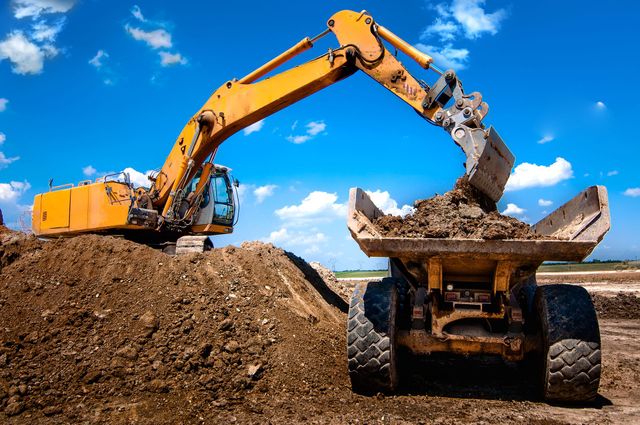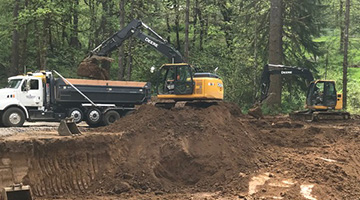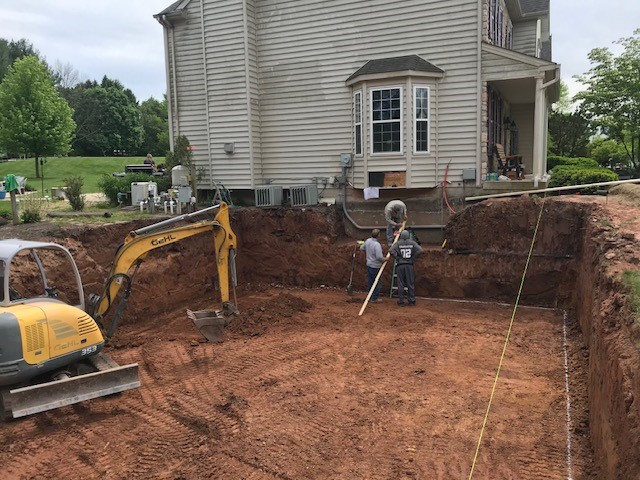Comprehensive Expedition: The Scientific Research Behind Superior Excavation Practices
From old hand devices to contemporary hydraulic excavators, the evolution of excavation techniques has actually been a testimony to human ingenuity and technological advancements. What absolutely establishes exceptional excavation practices apart is a deep understanding of geological concepts, combined with the usage of advanced devices and methods.
Development of Excavation Methods
Throughout background, the development of excavation strategies has played an important role beforehand construction practices and historical discoveries. From the rudimentary devices utilized by our forefathers to the advanced machinery used in modern times, the development of excavation techniques has actually substantially transformed exactly how we approach numerous projects.
In old times, hands-on labor with basic tools such as shovels, wheelbarrows, and pickaxes was the key method of excavation. This labor-intensive procedure limited the deepness and scope of excavations, often leading to slow development and limited accessibility to particular sites. Nonetheless, as civilizations progressed, so did the devices and techniques used for excavation.
The Industrial Revolution marked a transforming factor in excavation experiment the introduction of steam-powered equipment. This innovation transformed the area, enabling faster and more comprehensive excavations. In modern times, modern technology plays a pivotal function in excavation, with improvements like general practitioner systems, drones, and 3D scanning improving precision and performance in the area. The development of excavation methods proceeds to shape the means we build, discover, and understand the globe around us.
Role of Technology in Excavation

The integration of sophisticated innovation has actually basically transformed the field of excavation, enhancing accuracy and performance to extraordinary levels. One of the key technical innovations that has actually substantially impacted excavation techniques is the application of general practitioner systems. These systems enable accurate mapping of excavation sites, allowing operators to properly find underground utilities and structures. Additionally, the use of telematics in excavation devices has actually enabled real-time surveillance of maker efficiency, bring about proactive upkeep and enhanced functional productivity.
Additionally, the development of 3D modeling and simulation software has streamlined the preparation procedure for excavation projects. Drivers and engineers can now picture the whole excavation process before beginning, recognizing potential difficulties and enhancing operations. Combined with this, the implementation of drones in excavation activities has promoted aerial surveys, volumetric measurements, and site assessments with unparalleled speed and accuracy.
Geological Principles in Excavation
An understanding of geological principles is necessary for making certain the architectural integrity and stability of excavation sites. Geological factors play an important function in figuring out the usefulness and safety and security of excavation tasks (excavating ohio). One essential geological principle to think about is the type of soil or rock present at the site. Various dirt kinds, such as clay, sand, or gravel, have differing degrees of security and need different excavation techniques. Cohesive soils like clay might call for added support to prevent go to this site collapses, while sandy dirts may be prone to disintegration during excavation.
In addition, the geological framework of the area, consisting of faults, cracks, and rock formations, must be very carefully evaluated to identify potential threats and difficulties. Excavating near geological fault or unstable rock developments can lead to instability and possible hazards. By carrying out comprehensive geological studies and evaluation, designers and excavators can create techniques to mitigate dangers and make certain the successful conclusion of excavation projects. Eventually, incorporating look what i found geological principles right into excavation practices is vital for achieving risk-free, efficient, and sustainable outcomes.

Newest Devices for Excavation
In the world of excavation methods, contemporary developments in tools have actually reinvented the effectiveness and precision of excavation procedures. These drones can offer detailed airborne surveys of excavation sites, providing real-time data on topography and possible risks.
Another cutting-edge tool getting popularity is the execution of 3D printing innovation for producing custom-made excavation equipment. This permits the production of specialized devices that are tailored to the specific needs of a job, boosting efficiency and reducing downtime.
In addition, improvements in materials scientific research have actually resulted in the growth of stronger and more resilient excavation tools. excavating ohio. Tungsten carbide-tipped excavator add-ons, as an example, deal superior performance in difficult ground problems, enhancing performance on-site
Science's Effect on Excavation Practices

In addition, advancements in products science have brought about the development of stronger, extra long lasting excavation tools and tools. For circumstances, using composite materials in shovels and miners has actually improved their efficiency and durability, ultimately enhancing performance on excavation websites. In addition, scientific study on soil technicians and geotechnical engineering has actually given valuable insights right into soil habits, allowing excavation experts to make informed decisions relating to excavation techniques and dirt stablizing strategies. Overall, science proceeds to drive advancement and renovation in excavation methods, making excavation tasks more effective, cost-effective, and sustainable.

Final Thought
Finally, the evolution of excavation techniques has actually been substantially affected by developments in technology and a much deeper understanding of geological concepts. The most up to date devices and tools made use of in excavation have improved performance and accuracy in the field. The application of clinical understanding has significantly boosted excavation methods, resulting in more lasting and efficient methods for digging deep into different kinds of products.
In the world of excavation techniques, modern technologies in devices have transformed the effectiveness and precision of excavation processes. By leveraging clinical concepts, the excavation market has been able to substantially enhance effectiveness, accuracy, and safety and security in excavation procedures. GPR allows excavation groups to non-invasively check and map subsurface frameworks, utilities, and potential threats, allowing them to prepare excavation projects with better accuracy and minimized danger of accidents.
In addition, scientific research on dirt auto mechanics and geotechnical engineering has actually offered valuable insights into dirt habits, enabling excavation professionals to make enlightened decisions regarding excavation approaches and soil stablizing methods. Overall, scientific research continues to drive development and enhancement in excavation practices, making excavation tasks much more reliable, economical, and sustainable.